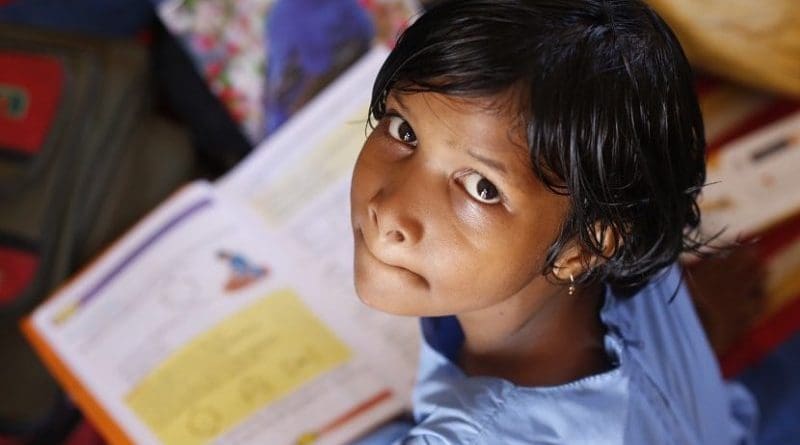Education Paralysis In Kashmir: Need To Protect The Future – Analysis
By Observer Research Foundation
Innovative and creative educational initiatives and their effective use can break the legacy of violence and mistrust in Kashmir.
By Anub Mannaan
The impact of conflict on school education is often overlooked. Education in such times can be a sustainable tool for achieving post conflict peace and providing stability and normalcy to the region. It is also a means of instilling hope and positivity as well as offering opportunity to the youth who are surrounded by violence. One of the major challenges of education in situation of conflict is the discontinuities it creates. These impact students’ academic performance as well as their Psyco–social developments.
Since the abrogation of Article 370 on August 5 2019, Kashmir valley has witnessed an unprecedented shutdown. There have been restrictions on movement of civilians, communication blackout, restrictions on media reporting etc. Educational institutions too have remained shut. According to reports, the government did attempt to reopen institutions but attendance remained poor as parents feared for their children’s’ safety. At the time of writing this article it has been more than 40 days since the abrogation and educational institutions in the valley remain deserted. Long breaks due to strikes and curfews have been a recurring feature in Kashmir. As per data compiled by the Jammu and Kashmir police based on media reports, since 1990 Kashmir has lost significant working days due to conflict. As reported by Indiaspend, 207 working days were lost in 1991 (at the onset of the conflict), 112 in 2010 and 130 is in 2016 (accounting for nearly 60% of total working days).
There is a high academic cost students pay due to long periods of closure. Even in the context of non-conflict, studies show that there is a decline in achievement scores (particularly in reading and math) on returning to the classroom after a long break. Breaks in education faced by the children of Kashmir are unpredictable, surrounded by fear, trauma and lack of stimulating activity. All these factors are severely detrimental for learning and development and is unsettling for students, making it tougher to reorient themselves in regular school routine.
The most tangible impact of long closures is the pressure on institutions to complete the prescribed syllabus in shorter time periods. In 2016, the state government announced mass promotion of 8, 9 and 11 standard students due to inability to complete the syllabus. In an interview, Aijaz Ahmad Bhat, director of school education (Jammu and Kashmir), spoke about taking remedial classes during the long winter break in completing the syllabus. For authorities and institutions conducting such remedial classes is ticking the box of work done but in reality there is no progress in learning. Learning is not just a function of information gathering, it is reliant on many factors such as parent’s education, environmental stimulation, nutrition and peers amongst others. Children are not empty containers that can be filled with information; they are inquisitive, meaning-making individuals who learn through the process of interacting with their environment rather than ‘remedial classes’.
Education needs to be holistic development of the child that goes beyond basic literacy. In an environment of conflict even the goal of basic literacy for all cannot be met. Studies on students’ achievement decline over long summer breaks clearly reveal socio–economic disparity. Students from traditionally disadvantaged sections of society perform much worse compared to students from higher socio – economic strata. Given the financial constraint, these children are at a disadvantage as they are unable to divert resources towards additional learning opportunities. They also do not have human capital support in form of educated parents, siblings or other family members, to assist them in their learning journey. Tuitions is a way of keeping up with peers but for the poor opportunity costs of attending tuitions is prohibitive.
Since the socio-political situation of Kashmir valley is extremely volatile, it is imperative that the government devise creative and innovative solutions for ensuring no child is left behind. These solutions, however, would need to be adaptable to the deep uncertainties and constantly changing dynamics in the region. These solutions could include a combination of formal and non-formal methods of teaching; partnering with NGOs to reach local communities; mitigating the risk of long distance travel by assigning teachers from within the localities to conduct classes in their neighborhood; and/or creating satellite schools within walking distance from home. Some such initiatives have been successful in other parts of the world. For instance, in Kenya’s North East Province, an impoverished and inhospitable terrain, a mobile camel library lends books to nomads, thus providing access to knowledge to the most disconnected youth. In Somalia, radio instruction programs were used to impart basic literacy and numeracy skills. These programs were reaching the children via digital media players. Foregoing are some economical and creative ways to meet the needs of children in difficult situations and regions. If the children of Kashmir are to have access to continuous education, creativity and flexibility are essential. This requires logistical and financial support, innovative ideas, training of teachers and most importantly, context sensitivity.
It is important to reiterate that education matters and its effective use can break the legacy of violence and mistrust. Discontinuities in education are inimical to psycho–social, emotional and cognitive development and literacy of the child. As we struggle to meet the millennium development goals in education, the impact of conflict on education and learning should be of urgent concern. We need to find ways to give our children a safe and secure learning environment in every situation especially during times of conflict.

